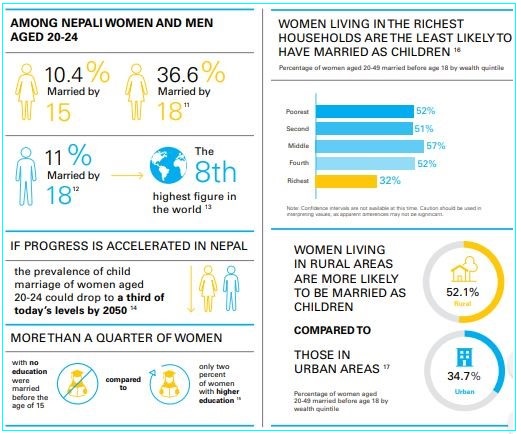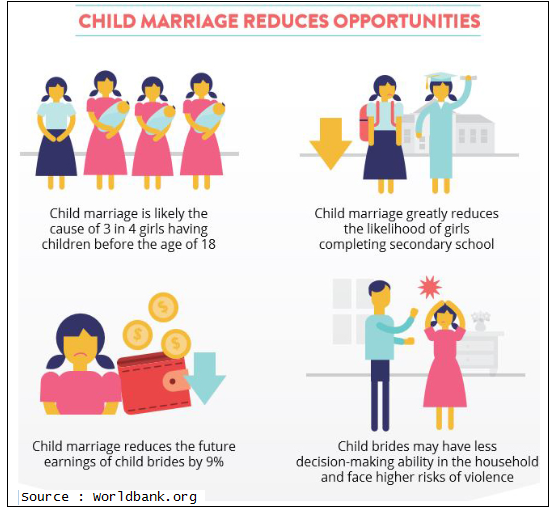The post Kathmandu’s 5 Amazing Temples of Lord Shiva! appeared first on Nepali Sansar.
]]>We can see that in the country’s centuries-old temples, historical architectures and rituals that are on focus of global audience even in this modern world. Thanks for the ancients who preserved it for future generations!
Because of these unique qualities, world tourists make their way to Nepal for an unforgettable and peaceful experience.
And, this makes Nepal stand among the list of every world tourist, irrespective of religion, creed and geography.
When we have to speak about Nepal tourism, Kathmandu Valley is one that needs a special mention. The Valley is a destination for many UNESCO World Heritage Sites including age-old architectures such as palaces, monuments, religious centers and many others that attract tourists.
Here we will see the 5 famous temples in Kathmandu that need a special mention
1) Pashupatinath Temple:
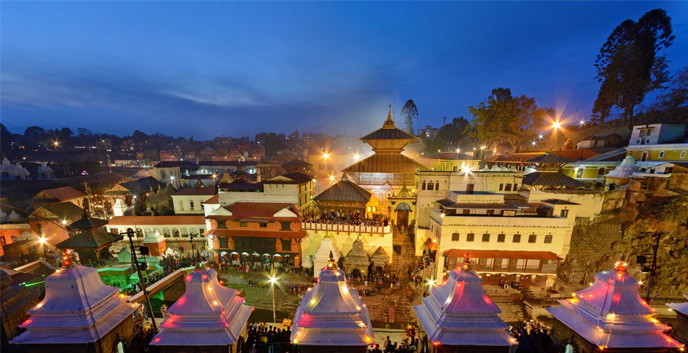
Kathmandu is a special place for world Hindu community majorly for Pashupathinath Temple, the shrine of the supreme Lord Shiva. The temple has its rich history of more than 2000 years and is one of the oldest temples in Gaushala of Kathmandu. As per the Hindu tradition, Lord Shiva is also called as ‘Pashupathi’ meaning the ‘king of all animals (and all beings)’.
Pashupathi is the Lord’s incarnation and is one of the eight Rudras holding the place of fire. The temple houses a five-faced idol of Lord Shiva, which represents all forms, elements and directions of the Universe. The shrine has been added to the UNESCO World Heritage Site in 1979. Lakhs od Hindu devotees reach out to this place for famous Nepali festival, i.e. Teej.
2) Santaneshwor Mahadev Temple:
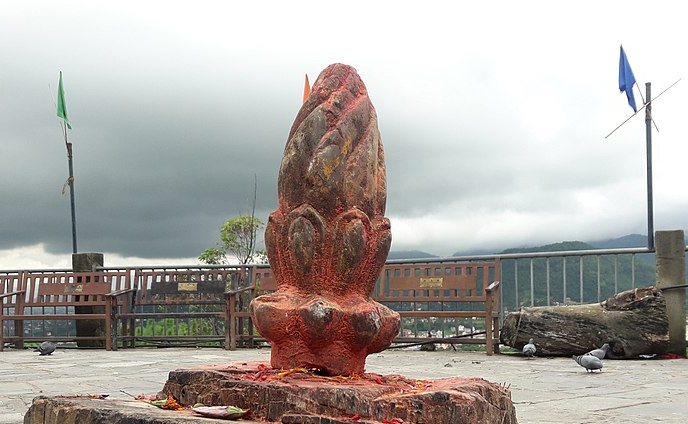
A great legend forms the basis of this Shiva shrine. It is believed that the temple stands on the hill, which is the place where one of the body parts of Goddess Sati fell down when Lord Shiva was carrying her (in distress) corpse after Sati performed self-immolation. Located in Jharuwarasi of Lalitpur, this shrine is most sought for those praying for children.
3) Kailashnath Mahadev:
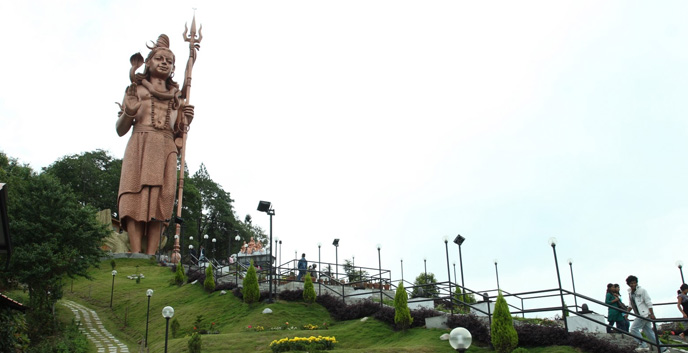
Located on the border of Bhaktapur and Kavre districts, Kailashnath Mahadev in Sangha is famous as the shrine with the tallest Shiva idol in Asia. The statue here stands 142 feet tall and aside from its pedestal, with main idol itself being 108-feet tall. Interesting, ‘108’ is a special number in Hindu mythology. The idol can be also be viewed on the way to Dhulikhel. The temple premises is widely spread across 400,000 sqft. area and also includes a resort, yoga & meditation center and health club.
4) Gokarna Mahadev Temple:
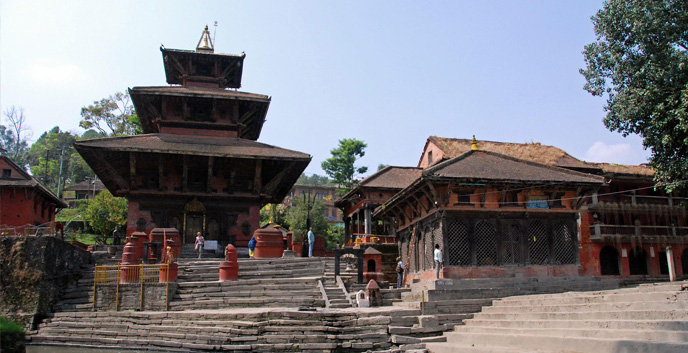
Located in the eastern part of the Valley, Gokarna Mahadev Temple is a shrine of rich history and high religious significance. Built in a three-tiered structure, the temple represents the grandness of Newari pagoda style architecture. The stone carvings around the temple stand as special attraction and are thousands’ years old. The temple also presents the sculptures of various Hindu deities in ancient carving styles.
5) Doleshwar Mahadev Temple:
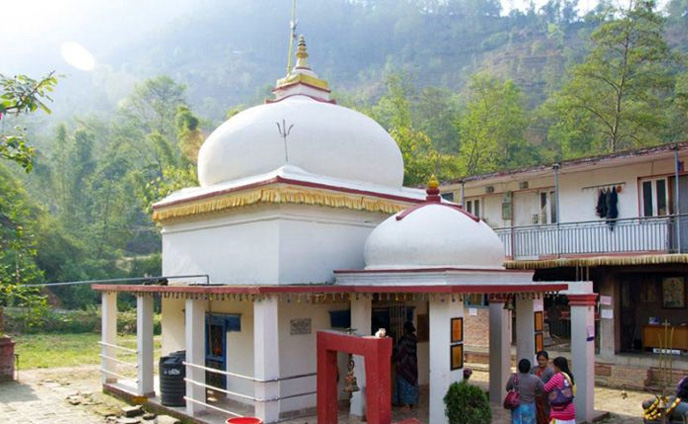
Doleshwar Mahadev Temple of Bhaktapur is 20 km away from the Kathmandu city center. It is believed that the trip to India’s Kedarnath will not be complete without a visit to Doleshwar Mahadeva and Pashupatinath. As per the local legend, Doleshwor Mahadev is believed to be the missing head of the Kedarnath.
Excited to visit! Then plan your trip to enlightenment! Kathmandu Valley also presents many such shrines with rich heritage and history.
Related News:
- 2018 Nepal Tourist Arrivals: Reaches Magical 1 Million Mark
- Nepal Opens Food Culture to the World
- Nepali Handicrafts – Tradition Alive! More of Art and Creative Vision
The post Kathmandu’s 5 Amazing Temples of Lord Shiva! appeared first on Nepali Sansar.
]]>The post Chitwan’s Patihani Among 100 New Nepali Tourism Spots appeared first on Nepali Sansar.
]]>Under the initiative, the government has promised of adding 100 new tourist destinations in a move to touch the untapped tourism potential of Nepal.
Patihani of Chitwan is one among the government’s 100 new priority tourism destinations being promoted under the Visit Nepal Year campaign.
Government is turning its promises into reality, say the locals, citing the ongoing development at the Someshwar Hill of Madi.
As the locals say, Patihani is undergoing a fast-paced transformation with the government implementing various tourism infrastructure developments in the region.
“Patihani is situated in a prime location of Bharatpur Municipality. This destination for tourism was chosen to keep its natural beauty in view. Apart from several new locations for sightseeing, our diverse culture is going to give a different taste to the tourists,” says Bishnuraj Mahato, Chairperson of the Ward. No.222 of the municipality that Patihani belongs to.
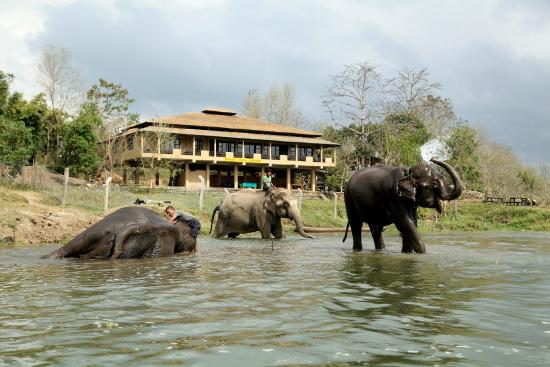
Speaking about Patihani’s potential as a tourism spot, Mahato compares it with Nepal’s renowned tourist destination Sauraha, which is known for elephant rides, jungle boating, a buffer zone of wide a variety of flora and fauna species.
“It should have happened much earlier. Sauraha has been in the eyes of the tourists for long. Patihani isn’t any less than Sauraha to mesmerize tourists,” Mahato adds.
Despite the delay, locals are happy about the recognition that Patihani is drawing now.
“Including our place within the 100 new destinations has spread the positive message among the people. Locals are quite elated. Arrival and stay of tourists in our area means our businesses will grow,” says Mahato.
Patihani – The New Tourism Spot
Major Attractions
Kamal Pokhari is one of the major tourism attractions of Patihani, which locals have been urging for due promotion since long.
“Kamal Pokhari is a mesmerizing place. We are trying to fix necessary facilities there in order to woo tourists,” said Mahato. He added that tourists do visit the place even now, but the number is not impressive. After two years, the visit-Nepal 2020 is going make it tremendously popular, adds Mahato.
According to the Operator of Jungle Villa Resort Ganesh Sharma Poudel, Kamal Pokhari is definitely a magical place that can give a thrilling experience.
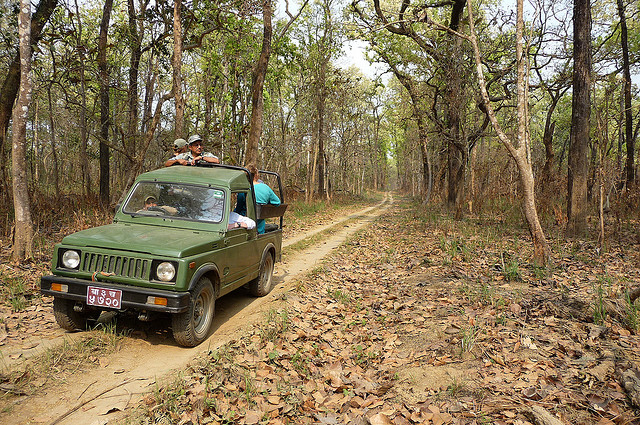
“There are many other attractions for tourists. But this one is amazing. We must promote this to the optimum,” adds Poudel.
He further informed that the tourist arrivals to the area up by 25 percent last year, with many tourists loving the serenity of the environment and local culture, and a wide variety of wildlife.
“We do have all the components which are necessary to excite tourists. We are blessed to have such a serene natural beauty here. Tourists feel relaxed, charged, energized,” adds Poudel.
Chief Development Officer of Chitwan Jitendra Basnet calls Patihani a place with yet-to-be-explored rich tourism potential. He is hopeful that the region will be a great experience for tourists.
“There are many such places here, which have not been ventured. It is not just an entry point to Sauraha, but a great natural wonder itself. We are building the necessary infrastructure for tourists in the view of Visit Nepal 2020. But while doing so, we make sure that the originality of this place and its uniqueness is not messed up,” adds Basnet.
According to Basnet, there is a growing interest among investors to invest in tourism development of Patihani. Besides, many local ethnic groups and indigenous communities such as Tharu have also been expressing interest to showcase their cultures and tradition to tourists. Tharu food & culture are two of the major tourist attractions in Chitwan, besides vulture and gharial reproduction centers in Patihani.
For the Future
Coming to regional development, Patihani currently has four 3-star hotels operating with nine other hotels offering quality service at reasonable pricing. Famous Belsar and Birendranagar community jungles come under the ambit of Patihani border.
“There are other facilities being built for them. And, then they can take a round of the jungles to watch animals and birds,” Mahato adds.
As the local sources say, three new 3-star hotels and four ordinary hotels are being constructed in the region with an aim to address tourists’ concerns. Big hotels in the region contain over 300 luxury rooms, while the small ones have 150-room capacity.
“We have adopted an integrated approach. All the stakeholders have been asked for due cooperation,” Mahato adds.
It’s now an exciting time for tourists to see when Patihani will take its full form!
Read More:
- Lumbini Draws 1 Million Tourists!
- 2018 Nepal Tourist Arrivals: 33.8% Growth Y-o-Y in Jan-Sept
- Bharatpur: Nepal’s Center of Trade
The post Chitwan’s Patihani Among 100 New Nepali Tourism Spots appeared first on Nepali Sansar.
]]>The post Job Opportunities in Nepal: A Glance at Potential Sectors, Scope! appeared first on Nepali Sansar.
]]>Given this fact, the country has always been open for wide range of opportunities, investment and proposals from foreign nations. All is to ensure better livelihood and career opportunities for its young citizens!
This wish of the Himalayan Nation is growing in size with the reported rise in number of its youngsters leaving the country for career opportunities abroad.
See:
- Nepal, Fifth Largest Foreign Community to Receive US H-1B Visa
- Nepali Students Across Foreign Varsities on Rise
- Nepali Youth Migration for Foreign Employment on Rise
Now, local development and generating employment locally remain to be two key agendas of the Nepal Government to provide an alternative to the rising number of migrants leaving for foreign destinations.
Towards this end, the government has already announced plans for local skill development and employment laws in a move to ensure more opportunities for Nepali citizens, especially youth.
Besides, Nepal as a fast-developing country, also presents scope for enormous employment opportunities across its various sectors including government and private sectors undergoing fast-paced development.
Some of the key high-potential public sector areas offering larger scope for youth employment and career opportunities in Nepal, through their ongoing development, in the current scenario include:
- Hydropower
- Transport Infrastructure
- Civil Infrastructure
- Agriculture
- Industrial Sector
- Logistics & Services
- Public Policy
- Digital Governance
- Local-level groups such as District Health Groups, Community Welfare Centers, etc.,
- Think-tanks and various other local, provincial and central government departments
Aforementioned are some areas undergoing fast-paced development with both government and private sector participation.
Coming to other side of the Nepali society, there are also fast-paced private career opportunities stemming up across the country. Some of the encouraging trends showcasing high employment scope for Nepali youth in other areas, other than public sector, include:
- Start-up Culture & SME Growth
- Entrepreneurship
- Rise of Dynamic Enterprises
- Rise in technology adoption and increasing IT firms
- Openness to pursue new talents
- Increasing business investment in new and existing ventures (as part of expansion)
- Changing societal trends and thinking patterns
- Rising remittance flows
As the reports say, there is a high rate of demand for government jobs among youth from provinces. According to the Public Service Commission (PSC), job applicants to the department has increased almost six-fold in a decade period. The Department’s 59th Annual Report puts Province 2 on the top of other provinces for such jobs.
Besides aforementioned opportunities that come as official notifications or via mouth talk, there might also be some good opportunities that can go unnoticed. As a solution to this, a good number of job portals in Nepal are operating on a regular basis looking every nook and corner of the country to keep the citizens informed about every new job opportunity along with offering them career counselling solutions.
Here are some of the top job portal and career counselling portals:
- Merojob
- Jobs Nepal
- RamroJob
- Kantipur Job
- Mero Rojgari
- Kumari Jobs
What World Bank Says?
In its report titled ‘Jobless Growth?’, the World Bank reports that Nepal needs to create more jobs to meet the employment needs of the gradually-growing working age population. “Every month, the working age population increases by 35,000 people and Nepal must create 286,900 jobs a year to maintain its employment rate,” reads WB report.
“Providing opportunities to these young entrants while attracting more women into the labor market will require generating even more jobs for every point of economic growth,” says Martin Rama, World Bank South Asia Region Chief Economist.
Government Efforts Underway!
Nepal Government has been making its efforts to address the situation in multiple ways.
Event the Budget FY 2018-19 has also dwelled more on creating sufficient job opportunities locally. Skill development is one step in the process that the Ministry of Labor has already announced as a measure to retain more local talents from going abroad to most-sought destinations such as Malaysia, Singapore, UAE, Australia, etc.
It’s alarming that around 512,000 youth leave the local market for foreign job opportunities, annually!
According to International Labor Organization, 63.7 percent of Nepal’s overall population are aged below 30 years and 19.2 percent of the youth in the age group of 15-29 years are facing unemployment.
Hope the ongoing developing and upcoming projects would provide needed scope for Nepali youth to earn their livelihood, locally, thus contributing to the homeland development.
The post Job Opportunities in Nepal: A Glance at Potential Sectors, Scope! appeared first on Nepali Sansar.
]]>The post Nepal – The Home to Exceptional Sports Talent! appeared first on Nepali Sansar.
]]>Whether it’s young & energetic Gaurika Singh or left-arm spin bowler Sandeep Lamichhane, we know why Nepal is known for what it is!
And with strong backbones like the Nepal Sports Council (NSC) and the respective sports bodies toiling hard to promote various sports in Nepal and produce the rarest of the rare, Nepal is slowly becoming Asia’s pride.
Here is a list of sports that set the Nepali hearts racing with passion and determination:
 Volleyball: After the government declared Volleyball as Nepal’s National Game on May 23, 2017, there was no stopping for volleyball enthusiasts across the nation. The craze for the game only picked up and took Nepal beyond its boundaries to become one with the world.
Volleyball: After the government declared Volleyball as Nepal’s National Game on May 23, 2017, there was no stopping for volleyball enthusiasts across the nation. The craze for the game only picked up and took Nepal beyond its boundaries to become one with the world.
The one thing that makes Volleyball the ‘Nation’s sport of choice’ is its easily-playable nature in any terrain. Read More
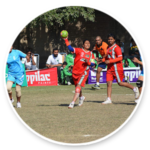 Handball: With indulgence for both men and women, the engaging sport is picking up popularity in Nepal. The Nepal Handball Association (NHA) has been striving to promote the sport in the country since its membership with the International Handball Federation in 1984. The country has made some exceptional performances in the field of handball. Nepal Women’s Handball team were runners-up for the 5th South Asian Handball Championship 2018. Read More
Handball: With indulgence for both men and women, the engaging sport is picking up popularity in Nepal. The Nepal Handball Association (NHA) has been striving to promote the sport in the country since its membership with the International Handball Federation in 1984. The country has made some exceptional performances in the field of handball. Nepal Women’s Handball team were runners-up for the 5th South Asian Handball Championship 2018. Read More Cricket: If anything is loved more passionately after football in Nepal, it is cricket! And with the country winning their recent ODI status, the game is a truly loved and looked-up to sport.If the team didn’t surprise you enough, watch closely to see how effortlessly Sandeep Lamichhane beats his opponents, how under Paras Khadka’s able leadership, the country makes its ambush against the enemy and how Dipendra Singh Airee stuns the opposite team with strikingly both batting and bowling skills. Read More
Cricket: If anything is loved more passionately after football in Nepal, it is cricket! And with the country winning their recent ODI status, the game is a truly loved and looked-up to sport.If the team didn’t surprise you enough, watch closely to see how effortlessly Sandeep Lamichhane beats his opponents, how under Paras Khadka’s able leadership, the country makes its ambush against the enemy and how Dipendra Singh Airee stuns the opposite team with strikingly both batting and bowling skills. Read More
 Swimming: When we associate Nepal with swimming, Gaurika Singh and Shirish Gurung are the first to strike everyone’s mind.
Swimming: When we associate Nepal with swimming, Gaurika Singh and Shirish Gurung are the first to strike everyone’s mind.
Sharing similar spirit is the 20-year old Shirish Gurung who has 15 national records to his credit. No wonder Nepal is proud of them! Despite the lack of good facilities, the country is pushing hard to produce more stars like them. Read More
 Table Tennis: The best thing about Nepal is it doesn’t treat disability the way it is, instead uses this inability to fulfill the dreams of those who wish to represent their country.Yes! Nepal’s Physical Disabled Table Tennis Association (NPDTTA) helps physically-challenged step-up and participate in tournaments both national and international.
Table Tennis: The best thing about Nepal is it doesn’t treat disability the way it is, instead uses this inability to fulfill the dreams of those who wish to represent their country.Yes! Nepal’s Physical Disabled Table Tennis Association (NPDTTA) helps physically-challenged step-up and participate in tournaments both national and international.
A 2016 initiative ‘Table Tennis for NepALL’ hosted by ITTF and UNSOSDP, provided an excellent platform for differently-abled people with the aim to bring differently-abled people in society’s fold. This strongly affirms that ‘Nepal is here to stay’ in term of sports! Read More
 Basketball: While Naismith took some time to set the game into action, it didn’t take Nepal that long to take up to basketball!
Basketball: While Naismith took some time to set the game into action, it didn’t take Nepal that long to take up to basketball!
Nepal’s NeBA and NeWBA are the driving forces behind the game’s popularity in the country. Their zealous efforts are what takes the ‘game to the people’. Read More
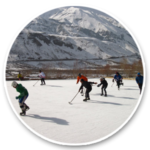 Ice Hockey: While Ice Hockey is a legacy in the making, it’s still undeniable that the country is making use of whatever resources it has to promote the sport in the country.
Ice Hockey: While Ice Hockey is a legacy in the making, it’s still undeniable that the country is making use of whatever resources it has to promote the sport in the country.
Highly dependent on Lake Tilicho for skating and ice hockey, the country is additionally equipped with four outdoor inline hockey rinks spread across important locations in Nepal. Currently, the governing body NIHA is working hard to setup a state-of-the-art facility with assistance from the IIHF. Read More
 Golf: Golf is still considered the game of the elite but Nepal is bent on proving us wrong. Nepal’s Pratima Sherpa who hails from a poor family has stunned the ‘best in the game’ with her skill and finesse.
Golf: Golf is still considered the game of the elite but Nepal is bent on proving us wrong. Nepal’s Pratima Sherpa who hails from a poor family has stunned the ‘best in the game’ with her skill and finesse.
Her age nor her background restricts her from taking up and pursuing her passion for the sport. Read More
 Martial Arts: What struck for all of us a self-defense technique, became a defense mechanism for humanity in Nepal.
Martial Arts: What struck for all of us a self-defense technique, became a defense mechanism for humanity in Nepal.
The Kung Fu Nuns of Nepal are proof to this. They use this art to protect the rights of the weaker communities. Be it Kung Fu, Judo or Karate, Nepal’s feat at martial arts is not something that can be hidden. With several governing bodies for each sport, we know that the country has a long way to go and a bright future in every area of martial arts. Read More
 Taekwondo: Nepal’s breakthrough with Taekwondo happened in 1988 when it won its first Olympics medal. That was enough to set up a legacy that survives till date.With the introduction of this art in 1983, the Nepal government realized its importance and decided to use it for the Nepal Police and Army departments.
Taekwondo: Nepal’s breakthrough with Taekwondo happened in 1988 when it won its first Olympics medal. That was enough to set up a legacy that survives till date.With the introduction of this art in 1983, the Nepal government realized its importance and decided to use it for the Nepal Police and Army departments.
Today, Taekwondo is practiced even by the general public of Nepal. Read More
Football: For Nepalis, football is much more than just a sport. The country’s recent achievements at the SAFF U18 and U15, among other championships speak of Nepalese passion and growing enthusiasm for football.
Moreover, All Nepal Football Association’s (ANFA) push for skilled footballers right from the grassroot level is offering an additional boost. With increased awareness on the sport from ANFA’S Education program, the country is sure to produce more and more skilled players. No doubt! Nepal has a promising future for football sport. Read More
The Abode of Talents and Skills
Nepal never ceases to surprise the world with its gifts and talents. Even though it is just one country among the hundreds of nations, it constantly reminds us from time-to-time about its existence and its uniqueness!
The post Nepal – The Home to Exceptional Sports Talent! appeared first on Nepali Sansar.
]]>The post World Polio Day 2018: Nepal, A Polio-free Nation! appeared first on Nepali Sansar.
]]>The Himalayan Nation proudly celebrated this day as a society that completely fought out the epidemic Polio.
World Health Organization (WHO) declared Nepal as a completely Polio-free nation in 2014.
On the occasion of the World Polio Day 2018, let’s take a look at Nepal’s success story in fully eradicating Polio.
The Success Story: Beginning!
Nepal got its first polio eradication program in 1998 under the funding of the Global Polio Eradication Initiative and affiliated to WHO’s Nepal country office.
The program was formed with an aim to conduct active surveillance for possible polio cases and ensure technical and other assistance on polio vaccination to the country’s national immunization program, the Expanded Programme on Immunization (EPI).
Further, the program grew in strength with nearly 14 field-offices-based surveillance medical officers engaged in the search for people with Acute Flaccid Paralysis (AFP), i.e. suspected polio cases.
The program thus succeeded in utilizing the surveillance data to guide polio immunization activities through mass campaigns with oral poliovirus vaccine.
By 2000, the country could successfully eliminate indigenous polio!
The Success Story: Period of Change!
2000 was a successful beginning for the country in its fight against polio. The country further succeeded in controlling the disease outbreak between 2005 and 2010.
Dealing with indigenous polio gave the country abilities to use resources from the polio eradication program to also control other vaccine-preventable diseases.
Since 2002, the program staff began to implement their experience to bring in improvement in multiple aspects of EPI.
They performed a series of activities such as continuous training to EPI staff on issues such as data management, vaccine cold chain management and assessment of adverse events. Besides, they also took ahead the development and implementation of policy guidelines.
They also assisted the public officials in supervision and monitoring regular immunization activities, microplanning to increase reach-out to every district, enhancing research capabilities and piloting innovations such as electronic immunization records and immunization training centers.
Finally, Nepal participated in a certification program on wild poliovirus elimination in the World Health Organization (WHO) South-East Asia Region in 2014, before finally getting declared as the ‘polio-free nation’.
The Success Story: Way Forward
In 2014, the number of surveillance system activities expanded to 299 sites, with focus on measles, rubella, and neonatal tetanus.
And, the information from the expanded surveillance helped in taking further the development and implementation of the country’s immunization policies.
Backed by surveillance data and the polio eradication program, EPI launched a measles vaccination campaign during 2004–2005 and could successfully identify 45 confirmed measles cases in 2006.
Further, a reported rise in measles cases led to a follow-up vaccination campaign in 2008, targeting children aged 9 months to 4 years.
Problems intensified in 2011 with additional measles cases reported along with years of data showing rubella on the other side. This led to the combined measles–vaccination campaign in 2012–2013.
Following this, EPI added rubella vaccination to the country’s routine immunization schedule, which further curtailed measles and rubella cases during 2013-2014.
Overall, the polio eradication program helped EPI introduce hepatitis B vaccine in 2003, Haemophilus influenzae type b vaccine in 2009, inactivated polio vaccine in 2014 and pneumococcal conjugate vaccine in 2015.
And, the eradication program’s research contributed to rise in vaccination coverage in the country among children aged 12–23 months during 2001-2015.
In a Nut Shell
The polio eradication program in Nepal not only addressed polio concerns but also became successful in preventing other vaccine-preventable diseases, thus also strengthening immunization system and reducing disease incidence across the nation.
The post World Polio Day 2018: Nepal, A Polio-free Nation! appeared first on Nepali Sansar.
]]>The post Nepal Laws and Rights – A Glance from Past to Present appeared first on Nepali Sansar.
]]>While many of the world nations have strict and stringent laws that protect citizen rights, some still lack them and are in fact struggling in the fight for survival.
Nepal is one such country that has seen various transitions over centuries from the kingship rule to democratic continued to today’s federal structure.
During the process, the ‘Code of Conduct’ has always been a serious matter of discussion for the country and its people. Discrepancies in this scenario drew their roots from the country’s constitution, which itself has suffered over centuries for sustainability and stability.
Let’s take a look at how the Laws & Rights transformation happened in Nepal over the period.
Roots of The Problem
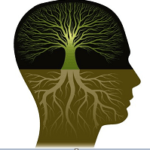 Political instability and constitutional uncertainty are the best ways to describe the laws & rights situation of Nepal.
Political instability and constitutional uncertainty are the best ways to describe the laws & rights situation of Nepal.
Post-independence era for the country began with the political instability that did not support constitutional formation.
Nepal has seen various shifts in political authority from kingship rule to multi-party system and again back to the Kingship since 1951, the year that saw the fall of the hereditary prime ministership in the country.
Finally, it was in 1990 that the country saw its new democratic constitution after the then King Birendra decided to adopt the new constitution owing to intense political pressure.
1990 is often hailed as the year that had set the foundation for the ‘Rule of Law’ in Nepal.
However, shift in authority did not stop with that.
The Article 127 of the Constitution: The Power to Remove Difficulties which states that “if any difficulty arises in connection with the implementation of this Constitution, His Majesty [The King] may issue necessary Orders to remove such difficulty and such Orders shall be laid before Parliament,” changed the game all together.
Citing the article, the Kingship rule appointed and dismissed three Prime Ministers since 2002, causing uncertainty in the country’s political situation, again.
Again, in response to the Maoist violence and delayed elections, the then King dismissed the Prime Ministership of Sher Bahadur Deuba and assumed full executive powers. Despite the arrival of series of PMs later, the real authority was in the hands of the King.
Similar situation took place in 2005 again. The King dismissed the then PM taking back his powers and declared a state of emergency.
Taking back of powers from Deuba damaged Nepal’s global status, which led to some terming the country as ‘another Uzbekistan’.
As a result of these political consequences, the law and order position in the country drastically fell down raising serious doubts about protection of citizen rights in the country.
“Nepal’s human rights and security situation has steadily declined since 2002. Nepal had the dubious distinction of having the world’s highest number of disappearances for both 2003 and 2004,” says the United States Institute of Peace (USIP) in its report published in 2005.
The report adds that the situation had gone beyond missing cases and also involves serious violations of common human rights such as extrajudicial killings, rape and restrictions on freedom of speech, assembly and association.
“All participants agreed that Nepal desperately needs a return to multi-party democracy to restore the governmental legitimacy necessary to negotiate peace with the Maoists. Such legitimacy cannot be achieved without fresh elections,” noted the report, citing panelists’ views on the situation.
A Decade Later- 2015, The Critical Year!
Fast forward to a decade, 2015 was a bad year for Nepal majorly because of the devastating earthquake that shook the country’s landscape posing threat to rights of a large number of quake victims and others.
Though 2015 saw the formation of the new constitution, violent protests around inclusion of communities belonging to the hilly regions stopped the government’s efforts to enforce rights or provide justice for wartime abuses.
In around 14 of Nepal’s most-severely affected districts, nearly 2.8 million people needed humanitarian assistance, which questions the protection of citizens and their rights in the country.
The constitution, brought into picture in 2015, left several doubts about rights and their implementation in the country, which was followed by months of violent protests.
The tense situation was largely attributed to hastily-drafted constitution that was promulgated just in a week’s time after public consultation.
Two transitional justice mechanisms were also set up in the year to ensure justice to victims of the 1996-2006 civil war.
The year also saw introduction of the “free visa, free ticket” policy in support of Nepali migrant workers in Gulf and Malaysia.
Overall, the year 2015 was really bad for Nepal, majorly because of the massive earthquake that not only led to loss of lives and structures, but also disturbed the country’s laws and rights scenario as evident in victims’ complaints about lack of governmental support, financial assistance, political fights leading to delays to setup quake reconstruction authority and failure in parliamentary functioning to address the same.
Continuing to 2016- A Little Ray of Hope!
Political instability continued even through 2016, the year that saw another change in government.
Political coalition led by Pushpa Kumar Dahal formed the new Nepal Government, the 9th one formed over the last eight years since then, giving some new hope!
Fight against age-old practices like child marriages got their due boost in the year, but little instability in the political situation at that time didn’t take that to the needed extent.
“The government has pledged to end child marriage by 2030, and in 2016 adopted a broad strategy on ending child marriage. Still missing, however, is a practical plan, and a promised process to develop one has been slow and undermined by lack of coordination and political will,” said the Human Rights Watch (HRW), a global human rights organization, in its consolidated report on 2016 events in Nepal.
The report also noted that the new constitution failed to meet the rights of nearly 4 million Nepalis who reportedly had any official status and were at risk of statelessness.
“Despite promises of reform, many people, particularly women, children born out of wedlock, or children of a refugee or naturalized parent, remain unable to secure drivers’ licenses, passports, bank accounts, voting rights, higher education, and other government welfare schemes,” HRW added.
However, the year saw little concrete progress on transitional justice pertaining to serious abuses that occurred part of civil war in 2006.
Despite strong opposition from civil societies and activists over lack of transparency in the appointment of key officials, the Truth & Reconciliation Commission and the Disappearances Commission resumed their public hearings as of August 2016 and have received around 59,000 complaints.
While the old government said it would withdraw all wartime crimes against the alleged as a pardon, the new government pledged of amending relevant laws to provide needed justice to conflict-era victims.
But, a concrete roadmap for the same remained a wait!
2017- A Game-changer Year!
2017/2074 was really a game-changer year for Nepal and its citizens majorly because of the local body and general elections to welcome a long-awaited political transition.
As envisaged, the Deuba-led Nepali Congress Government conducted the three-tier national elections for electing members for the Lower House of Parliament, House of Representatives and members for the newly-created provincial assemblies.
Nepal received global attention for these elections majorly for timely conducting and smooth flow of the electoral procedure in line with the Code of Conduct as envisaged by the Election Commission.
“Domestic and international observers characterized the national elections as ‘generally well-conducted,’ although some observers noted a lack of transparency in the work of the Election Commission of Nepal (ECN),” HRW said in its 2017 report on Nepal.
Security mechanism adopted to ensure the safety and transparency of electoral procedures earned wide recognition for Nepal from the world nations and global rights organizations.
“The government routinely investigated and held accountable those officials and security forces accused of committing ongoing violations of the law. Security personnel accused of using excessive force in controlling protests in recent years did not face notable accountability, nor did most conflict-era human rights violators,” HRW added.
The year also saw some key developments in a few conflict-era cases, but the status of those disappeared in the 1996-2006 civil conflict remained unknown.
According to HRW, there were no reports of disappearances by or on behalf of government authorities during the year. And, the new criminal code expected in 2018 criminalized disappearance.
In June 2017, the Commission of Investigation on Enforced Disappeared Persons (CIEDP) had set up five teams to initiate investigation on complaints pertaining to disappearances filed by conflict-era victims.
Despite some reforms, many other issues pertaining to rights such as lack of citizenship law even two years after the promulgation of the new constitution, among others remained a question even at the end of 2017, which concluded with giving hopes on the new Communist-led new Nepali Government that saw an outstanding victory nation-wide.
2018- Political Transformation, Race Began
 2018 is a fresh year for Nepal and its people, because of the formation of the Communist party led new government that saw KP Sharma Oli returning to power as Nepal’s new Prime Minister.
2018 is a fresh year for Nepal and its people, because of the formation of the Communist party led new government that saw KP Sharma Oli returning to power as Nepal’s new Prime Minister.
Formation of Oli-led government triggered a sudden phase of change in the country in all aspects, from internal governance to maintaining external relations.
Balancing the act, Oli Government began its journey by maintaining a balanced stance with both the Asian giants adjacent to the Himalayan nation.
Bringing in unexpected reforms in a dashing move remained the highlight of the new government as seen in proposal of new laws pertaining to criminal code and transitional justice, among others.
From Day-1, the new government has been on foray of new laws to get nearly 110 laws approved at the Parliament, failing of which leads to cancellation of all the pending laws, to support the full-fledged implementation of the new Constitution by the midnight of September 18, 2018 as per the constitutional deadlines.
August 2018 triggered new phase of development in Nepal’s rights situation beginning with the implementation of the new Civil Code Act & Criminal Code Act that envisages to bring major reforms such as action against acid attempts against women, anti-pollution measures, criminalizing rape victims, among others in the country’s legal system, replacing the 55-year old Nepal General Code.
The implementation of the new civil code on August 17, 2018 drew mixed response. While some termed it as the move to ‘suppress press freedom’, some supported it saying it is the new phase in the country’s rights situation.
As of August 2018, 73 out of 110 laws have been drafted with some of them already endorsed and 37 laws are yet to be drafted with five of them still awaiting the addition of relevant rights and the government was making moves to forward 25 of 73 drafted laws for Cabinet approval, which will further be endorsed in the Parliament.
The Government of Nepal registered 16 out of 17 key bills pertaining to fundamental rights in the Parliament on August 27, 2018. These 17 new laws under consideration make up the total 31 fundamental rights and duties as promulgated by Nepali Constitution.
Some of the bills under process at the Parliament include:
- Right to Social Security
- Right to Social Justice
- Right Against Preventive Detention
- Right of Victim of Crime
- Rights of Child
- Rights of Women
- Right to Clean Environment
Besides these, the government is also seriously working on the law to ensure sustenance allowance for unemployed citizens in line with the constitutional statute of employment for every citizen.
Besides the new ones, there are nearly 375 old laws that are still waiting amendment to comply with the constitutional rules.
Wait & Watch
The ‘Code of Conduct’ plays a key role in defining peace & harmony across social, political, religious, economic aspects, driving the country’s path to success with full-fledged public involvement.
Whatever, the laws & rights scenario of Nepal is literally a story of ups & downs. Will have to wait and watch what new the Oli-led, present Nepali Government will do to protect and safeguard the rights of its citizens!
The post Nepal Laws and Rights – A Glance from Past to Present appeared first on Nepali Sansar.
]]>The post Major Nepali Festivals – A Mixture of Culture & Rich Heritage appeared first on Nepali Sansar.
]]>Surrounded by the mighty Himalayan ranges, landlocked Nepal has been enjoying the status as the world’s only full-Hindu nation standing among the top three countries with the largest Hindu population, followed by India and Mauritius.
Another integral part of Nepal is ‘Buddhism’. As a home to the birthplace of Lord Buddha, the Lumbini, Nepal is majorly known for wide-spread Buddhist culture and tradition that can be seen in every part of the country.
Nepal also has many age-old communities living across its mountainous regions as a symbol of culture and tradition.
Such diverse communities with different cultural backgrounds make Nepal the ‘world’s paradise for culture & tradition’, primarily because of the festivals they celebrate all through the year grabbing world attention.
Nepal has its own Hindu Vedic calendar called ‘Bikram Samvat’ based on which the country celebrates all its festivals.
Let’s look at some of the most important festivals of Nepal month-wise, celebrated every year:
January
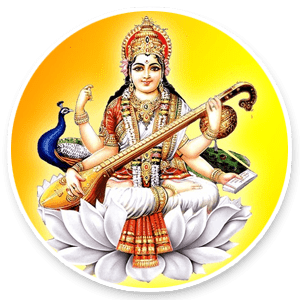 Basant Panchami is the auspicious festival that Nepalis celebrate in the month of January.
Basant Panchami is the auspicious festival that Nepalis celebrate in the month of January.
On the occasion of Basant Panchami, Hindu devotees of the country worship Goddess Saraswati, the abode of education and knowledge of all forms.
The festival marks the end of winter and beginning of the summer in Nepal, and usually falls in the third week of January, every year.
February
 February has one of the highly-revered festivals of Nepal i.e. Maha Shivratri.
February has one of the highly-revered festivals of Nepal i.e. Maha Shivratri.
Maha Shivratri, denoting the Lord Shiva, is the festival celebrated until midnight from early in the morning.
On this special day, devotees freshen up early in the morning and visit Shiva temples across the country.
The Pashupatinath Temple of Kathmandu is famous for this festival.
Thousands of Sadhus (Hindu holy men) and Hindu pilgrims from different parts of the world can be seen in Nepal’s Pashupatinath temple on the Shivratri festival day, which falls in the second week of the month, every year.
March
 Holi: The festival of colors that Nepalis celebrate in this month. Fondly called as the ‘Festival of Colors’, the Holi festival is celebrated on different days across the country, in Terai, Kathmandu and hilly regions. People celebrate the day by smearing colors on each other along with sprinkling colored water and throwing water balloons onto each other, adding to the joy. Holi in Nepal usually falls in the first week of March, every year.
Holi: The festival of colors that Nepalis celebrate in this month. Fondly called as the ‘Festival of Colors’, the Holi festival is celebrated on different days across the country, in Terai, Kathmandu and hilly regions. People celebrate the day by smearing colors on each other along with sprinkling colored water and throwing water balloons onto each other, adding to the joy. Holi in Nepal usually falls in the first week of March, every year.
 Ghode Jatra: This is another festival that is celebrated in the third week of March. As the name suggests, this is the ‘festival of horses’. On this special day, Nepali Army organizes a horse race with a belief to ward off the evil Gurumapa, who’s soul is believed to be staying underground in Tundikhel.
Ghode Jatra: This is another festival that is celebrated in the third week of March. As the name suggests, this is the ‘festival of horses’. On this special day, Nepali Army organizes a horse race with a belief to ward off the evil Gurumapa, who’s soul is believed to be staying underground in Tundikhel.
April
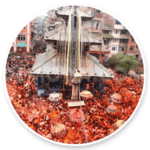 Bisket Jatra: April hosts one of the country’s famous festivals i.e. the Bisket Jatra. Usually celebrated in the second week of April, this festival is also celebrated as the Nepali New Year. Bisket Jatra is a big holiday festival for Nepalis and Bhaktapur is the known location for this festival in Nepal. Also called as the Chariot Festival, Bisket Jatra begins with pulling a huge chariot that contains the idol of Lord Bhairab residing on it and ends with the chariot battle at Khalna Tole in Bhaktapur. The festival witnesses people of all ages offering sweets to their elders as a token of respect and gratitude. While those who lost their mothers visit Mata Tirtha in the west of Kathmandu, take a holy bath and offer prayers in memory of their mothers.
Bisket Jatra: April hosts one of the country’s famous festivals i.e. the Bisket Jatra. Usually celebrated in the second week of April, this festival is also celebrated as the Nepali New Year. Bisket Jatra is a big holiday festival for Nepalis and Bhaktapur is the known location for this festival in Nepal. Also called as the Chariot Festival, Bisket Jatra begins with pulling a huge chariot that contains the idol of Lord Bhairab residing on it and ends with the chariot battle at Khalna Tole in Bhaktapur. The festival witnesses people of all ages offering sweets to their elders as a token of respect and gratitude. While those who lost their mothers visit Mata Tirtha in the west of Kathmandu, take a holy bath and offer prayers in memory of their mothers.
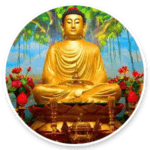 Buddha Jayanti: This is another festival that usually falls in the last week of the April. This festival is celebrated as the birthday of Lord Buddha. Both Hindus and Buddhists celebrate this festival on the first full day of the first month of the Hindu lunar calendar. As part of the celebrations, devotees visit Buddhist shrines and monasteries of the country. Grand celebrations are held at the birthplace of Lord Buddha i.e., Lumbini. Kathmandu’s Tibetan enclave of Boudhanath is special for this festival with lot of special celebrations.
Buddha Jayanti: This is another festival that usually falls in the last week of the April. This festival is celebrated as the birthday of Lord Buddha. Both Hindus and Buddhists celebrate this festival on the first full day of the first month of the Hindu lunar calendar. As part of the celebrations, devotees visit Buddhist shrines and monasteries of the country. Grand celebrations are held at the birthplace of Lord Buddha i.e., Lumbini. Kathmandu’s Tibetan enclave of Boudhanath is special for this festival with lot of special celebrations.
May-June
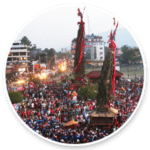 Rato Machhendranath is the only Nepali festival celebrated during May-June period. Revered as the longest and largest in Patan region, this festival witnesses a large chariot built on Pulchowk Road over several weeks finally before the Lord Machhendranath is placed on it for procession. Three days after this begins the chariot procession all through Patan, wider Lalitpur and continues towards Bungamati. Machhendranath is the Newari ‘God of Rain’. The festival usually falls in the monsoon season.
Rato Machhendranath is the only Nepali festival celebrated during May-June period. Revered as the longest and largest in Patan region, this festival witnesses a large chariot built on Pulchowk Road over several weeks finally before the Lord Machhendranath is placed on it for procession. Three days after this begins the chariot procession all through Patan, wider Lalitpur and continues towards Bungamati. Machhendranath is the Newari ‘God of Rain’. The festival usually falls in the monsoon season.
August
There are three festivals celebrated in the month of August.
 While one is ‘Naga Panchami’ that usually falls in the mid of monsoon in the second week of August, ‘Janai Purnima’ and ‘Gai Jatra’ are two other festivals celebrated in the fourth week of the month.
While one is ‘Naga Panchami’ that usually falls in the mid of monsoon in the second week of August, ‘Janai Purnima’ and ‘Gai Jatra’ are two other festivals celebrated in the fourth week of the month.
‘Naga Panchami’ is the festival of serpent god Naag, where the devotees offer milk to serpents with a belief that this would protect from snake attacks. Devotees also believe that the snakes as water guards that help in better rains.
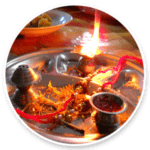 ‘Janai Purnima’, also called the ‘Thread Festival’, celebrated by Hindu men, especially the Brahmins and Chettris communities. On this day, devotees perform annual change of Janai and tie a sacred thread around their wrist. On the day of ‘Janai Purnima’, people visit the sacred pond in high altitude ‘Gosaikunda’ where the celebrations are performed on a grand scale.
‘Janai Purnima’, also called the ‘Thread Festival’, celebrated by Hindu men, especially the Brahmins and Chettris communities. On this day, devotees perform annual change of Janai and tie a sacred thread around their wrist. On the day of ‘Janai Purnima’, people visit the sacred pond in high altitude ‘Gosaikunda’ where the celebrations are performed on a grand scale.
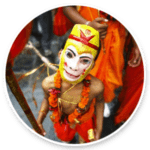
‘Gai Jatra’ is the ‘Festival of Cows’. The festival marks the philosophy of treating birth and death in a positive way. The God of Death Lord Yamaraja is worshipped on this special day along with cows. In the absence of cows, a boy dressed in cow style is worshipped.
September
September also has three important Nepali festivals: Krishna Janmastami, Teej and Rishi Panchami.
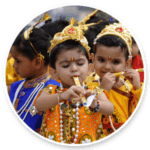
Krishna Janmastami is the famous Hindu festival that is marked as the birthday of Lord Krishna. Thousands of Hindus gather at Krishna Mandir in Patan Durbar Square on this auspicious day, which is also celebrated across the world. This festival usually falls in the first week of September, every year.

Teej is another important Nepali festival that is celebrated in the second week of September. Women celebrate this festival praying the god for firm relation and well-being of their husbands.

Rishi Panchami is also celebrated in the second week of September, celebrated immediately after the ‘Teej’ puja. On this festival day, woman devotees offer homage to Rishis (saints) seeking their blessings for all the sins happening in their lifetime.
October
October marks the biggest festival season for Nepal i.e. Dashain.
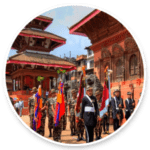 Dashain is the most important and biggest festival of Nepal that begins in the second week of the month and lasts for 10 days. Totally celebrated for 15 days as the festival of victory over evil, Hindu devotees worship 10 different forms of Goddess Durga during this auspicious festival. On the tenth day of the festival, family members receive Tika (rice, red vermillion and yoghurt) on their foreheads from their elders as per the tradition.
Dashain is the most important and biggest festival of Nepal that begins in the second week of the month and lasts for 10 days. Totally celebrated for 15 days as the festival of victory over evil, Hindu devotees worship 10 different forms of Goddess Durga during this auspicious festival. On the tenth day of the festival, family members receive Tika (rice, red vermillion and yoghurt) on their foreheads from their elders as per the tradition.
Chhath is another festival celebrated in the second week of October. Majorly observed in the Terai region of Nepal,
November
 Tihar is the festival celebrated in this month. Called as the ‘festival of lights’, the five-day Tihar festival usually falls in the first week of the month, every year, after Dashain. The festival witnesses worshipping of three different deities on each individual day. Cow is worshipped on the first day (Gai Tihar), followed by Crow (Kag Tihar) as the messenger of Yama on the second and Dog (Kukur Tihar) as Yama’s custodian on the third day. Finally, devotees worship the Goddess Lakshmi as the bringer of wealth, by oil lamps, candles and colorful lights in their houses.
Tihar is the festival celebrated in this month. Called as the ‘festival of lights’, the five-day Tihar festival usually falls in the first week of the month, every year, after Dashain. The festival witnesses worshipping of three different deities on each individual day. Cow is worshipped on the first day (Gai Tihar), followed by Crow (Kag Tihar) as the messenger of Yama on the second and Dog (Kukur Tihar) as Yama’s custodian on the third day. Finally, devotees worship the Goddess Lakshmi as the bringer of wealth, by oil lamps, candles and colorful lights in their houses.
The next festival that follows Tihar is the ‘Chhath’, celebrated exactly on the seventh day after Tihar. On this day, devotees bathe in holy rivers and offer prayers to Sun God on river banks. Terai or the Rani Pokhari Tank in Central Kathmandu are the best places for this festival celebrations.
On an Endnote
It would really be an amazing experience visiting Nepal during any of these major festivals that reflect unforgettable Nepali culture and tradition!
The post Major Nepali Festivals – A Mixture of Culture & Rich Heritage appeared first on Nepali Sansar.
]]>The post Child Marriages in Nepal: A Long-standing Concern Awaiting Eradication! appeared first on Nepali Sansar.
]]>But, digging to what extent that’s being applicable in the today’s world sheds light on real concerns surrounding a woman/girl child. One such major concern that many world nations have been fighting for centuries is ‘Child Marriages’.
Development over the years brought in societal transformation in many nations. However, there are few nations that are yet to see a full-fledged transition in all terms. Nepal is one among them.
Despite crossing over centuries, Nepal is still fighting with some age-old practices, one of them being ‘child marriages’.
Child marriages in Nepal has been a long matter of debate bothering many communities across the country for generations, with some of them strictly following it as a customary and socially-established practice.
Key Reasons and Impact
According to international bodies who reported Nepal’s scenario so far, child marriages in Nepal are majorly attributed to the lack of awareness, literacy, openness to change, social inclusion and other aspects among the majority of the population.
Reasons leading to child marriages in Nepal are complex, says UNICEF, pointing at poverty, low value attached to daughters and lack of access to education, caste system, and patriarchal culture as major impacting factors.
A survey based on the Nepal Multiple Indicator Cluster Survey (MICS) 2014 data reports high contribution of child marriages to the increasing school drop-outs among girls in the country.
Fig.1 Reasons for school dropout among women aged 20–24 years; 40% report marriage as the reason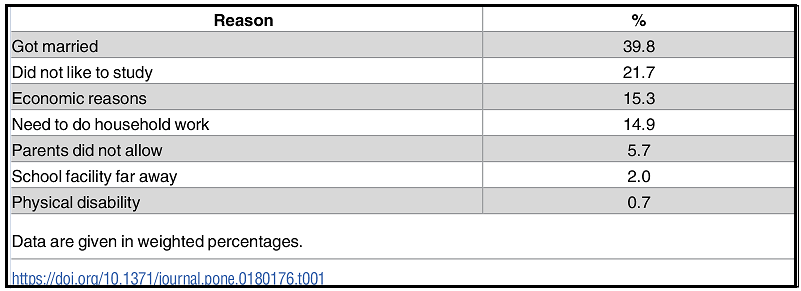
Fig. 2 Distribution of the highest grade completed by women aged 20–24 who left school due to child marriage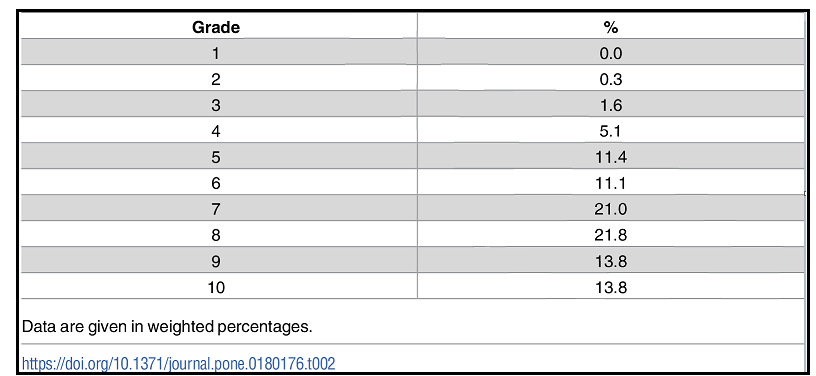
Fig. 3 Number and percentage of girls aged 15–17 by schooling status and marital status

Adding to the concerns, the April 2015 earthquake raised fears over supposed increase in number of child marriages owing to worsened situation of the public.
Key findings evaluated from various sources show:
- Nepal reports one of the highest rates of child marriages, globally
- Average prevalence of child marriage among both sexes at more than 40 percent as a whole, with girls at nearly 50 percent and boys at 30 percent
- Parents were the major factors to push for child marriages among nearly 60 percent of female cases and 55 percent of male cases
- There are also many cases where children themselves got engaged in ‘love marriages’ at an early age
- There has also been a shift in decision-making patterns from arranged marriages to love marriages, parents to children from parental pressure to love and fulfilment of sexual desire, and rural to rural-urban scenario
- A survey of households heads found 32 percent of them saying ‘parental pressure’ as a leading cause to child marriages, followed by children’s own desire and need for supporting household activities
- Early marriages were also attributed to over usage of mobile phone usage and media
- Measures to save money to be spent on organizing marriages also contributed to the rise
- Disliking among boys (from urban areas) for their first marriages often resulted in second marriages driving the need for child marriages among girls from rural areas
- Legal action against parents could control the menace to some extent in some cases, however, it did not work-out in case of children voluntarily engaging in love marriages upon self-interests
- Overall, there were hardly any genuine evidences showing child marriages as people avoided to do so owing to fears for legal matters
What Addresses the Menace?
Considering the aforementioned factors, there are few ways that renowned international rights bodies recommend, to stop child marriages. These include:
- Formation of vigilant groups and community networks with all the concerned stakeholders to check the spread of menace among the socially-marginalized communities, who are reportedly found to be more prone to the situation
- Need for spread of awareness among adolescent girls and boys on the ill-effects of getting married earlier
- Empowering young girls and boys with appropriate comprehensive sex education at the school level, along with skill-based training
- Conducting awareness programs through respective primary health centers at the community levels
- Establishment of Focused Group Discussions (FGDs) involving active local participants such as youngsters for a detailed understanding on causes, patterns and impact of child marriages and practices encouraging the same
- Programs that encourage school enrolment among girls and follow gender transformative approach should be designed
- Strengthening of networks that are combination of communities and related stakeholders from local to national levels
- To the next level, linking of local responses against the menace to the global aid organizations that can support the cause
Social and human rights organizations of Nepal feel that the existence of child marriages menace is obstructing the country’s progress in line with the Millennium Development Goals (MDGs) set by the United Nations.
Despite the existence of relevant laws that stipulate 20 years as the legal age for marriage for both girls and boys, the Ministry of Health records show nearly 30 percent of girls getting married at 15-17 years of age.
“We certainly need to strongly lobby against early marriage, but we are hampered by a very poor monitoring system to implement the existing law. Our biggest challenge is the family’s attitude towards educating their girls,” says Dibya Dawadi, Deputy Director-General, Department of Education, Nepal.
MDGs strongly pitch for few things pertaining to human rights and education. While MDG 2 pitches for universal primary education, MDG 3 finds the significance of promoting gender equality and women empowerment, MDG 4 is deeply concerned about controlling child mortality and MDG 5 calls for improvement of maternal health.
Unfortunately, child marriages work against all these MDGs stopping the sustainable growth of the Nepali citizens.
Activists feel that the change has to start from touching roots of the problem i.e. addressing unemployment, economic situation, among others forcing families to indulge in anti-social practices like child marriages.
What Key Associations & Their Leaders Say?
Unless people are made aware of devastating multi-pronged effects of early marriage, they will not strive to eliminate it from society. People should also be made aware of human rights, so that they are aware of their own rights and the rights of children. Only then will parents be motivated to ensure that their children enjoy their right to childhood – World Plan International
Child marriage is a common problem in Nepal’s rural areas. About 50 percent marriages take place before youth turn 18 due to a lack of awareness, poverty and weak enforcement of child marriage legislation. – Plan International
Women living in rural areas are more likely to be married as children those in urban areas. Nepal has one of the highest rates of child marriage in Asia – for both girls and boys. Although the legal age of unions for both sexes is 20, more than a third of young women aged 20-24 report that they were married by the age of 18, and just over one in ten by 15. – UNICEF
Child marriage deprives girls of educational opportunities. However, supply-side issues such as poor access to school, low quality of educational provision, and poor skilled employment prospects, as well as demand side challenges such as concerns over safety and security or the need for unpaid household labor may be important contributing factors to child marriage. Girls may therefore discontinue their education due to a range of factors and then, as they are unable to complete their education, enter into marriage. – A Study based on the Nepal Multiple Indicator Cluster Survey (MICS) 2014
Early marriage should be stopped because it not only affects girls’ education but also their health. After marriage, these girls rarely come back to school and even if they do, their performance is very poor. Early marriage negatively impacts their self-confidence. – Sumon Tuladhar, Education Specialist at UNICEF Nepal
Sticking a mother in jail is not helpful when she may have other young children with no one to feed and protect them. Child marriage is extreme denial of children’s rights. Many girls also suffer from abusive marriages as they are married to older boys. – Helen Sherpa from World Education
Child marriage not only discriminates against women and girls in Nepal, it is a violation of their basic human rights. Young brides are pressured to give birth soon after marriage and are susceptible to both domestic and sexual violence—escalating harms that have a profound negative impact on the health, education, employment and dignity of women and girls. The government of Nepal has an immediate obligation to stop child marriage. – Melissa Upreti, Regional Director for Asia, Center for Reproductive Rights
The government needs to prioritize the implementation of laws prohibiting child marriage in Nepal. We have to guarantee that our women and young girls can exercise their constitutionally protected rights and end this discrimination against them in the name of marriage. – Seikh Chand Tara, Chairperson, National Women Commission
On an End Note
Hope, continuous efforts by governments in the form of laws and human rights activists supported by global aid agencies will address the long-standing menace of child marriages in Nepal, contributing to the country’s developmental path.
The post Child Marriages in Nepal: A Long-standing Concern Awaiting Eradication! appeared first on Nepali Sansar.
]]>The post Human Trafficking in Nepal – Relentless Fight for Rights Continues! appeared first on Nepali Sansar.
]]>Even then, it’s tough to say we are on path of development, considering the illicit activities such as exploitation of #humanrights & freedom, #SocialInequality and #ChildLabor, among others.
One such demotivating aspect that makes us rethink of development is #HumanTrafficking, the menace that has been deciding the fate of many innocents, globally.
Standing next to drug trafficking and arms dealing, human trafficking remains to be a battle and a growing criminal activity for many nations despite strict policy-level decisions, and Nepal is no exception! In fact, more prone to girl and #womentrafficking in particular.
Relentless efforts by government, social activists and media over the years literally went in vain in tackling #HumanTraffickingInNepal.
“First you have to learn to take them as your own child. Then you will feel the sorrow and then the strength comes out from you to protect them” – Says Anuradha Koirala
Let’s take a closer look at human trafficking scenario in Nepal!
A Glance
Nepal is one of the key source countries globally known for forced labor and sex trafficking involving men, women and children. Human trafficking in Nepal’s case can be observed in three different ways:
1) Within the Country: Human trafficking within Nepal typically involves #traffickingpeople from rural to urban locations. Especially, the young girls and women trafficked from rural areas are subjected to #sexualexploitation across enjoyment spots such as pubs, hotels, and other places falling under the ambit of tourism centers. While some of these women voluntarily take up the act, many of them were literally forced into the act and end up as slaves after a period, either #bondedlabor or as workers across low-profile jobs in factories etc.
2) Across the Indo-Nepal Border: Girl and women trafficking across the Indo-Nepal border is one most-heard aspect. Over the years, many girls have reportedly been trafficked to various India’s urban areas and used for sexual exploitation across brothel houses and child labor across unorganized and informal sectors. Surprisingly, records show the presence of more than 1 lakh trafficked #Nepaliwomen across India’s urban locations.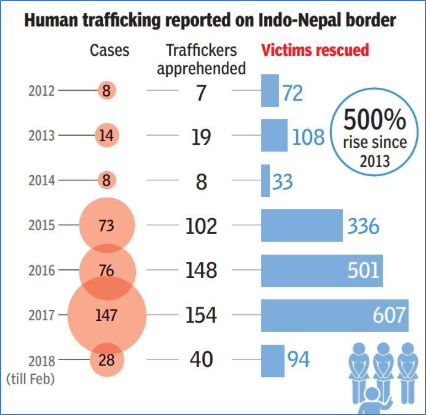
3) Beyond Borders: Besides the closest borders like India, #NepaliVictims have also reportedly been trafficked to various other destinations such as Bangladesh, Pakistan, Russia, Hong Kong, Malaysia and some Middle East countries. India has reportedly been a transit for trafficking of Nepali women to regions such as Western Asia and Middle East, among others. Nepali victims to non-Indian destinations are most likely subjected to sexual exploitation, in particular to non-brothels.
Here are some shocking facts you should know about human trafficking in Nepal’s case:
- Each year, around 1-2 lakh Nepali women or girls are trafficked to Indian brothels at an average selling price of INR 50,000-70,000
- Trafficked Nepali girls or women are majorly exploited for their beauty (fair and lighter skin tone) and virgins among them are often believed to have ability to cure #AIDS
- #Poverty, #illiteracy and less earning power are among key reasons subjecting Nepali women to trafficking
- #Slavery remains to be the oldest forms of #ForcedLabor in case of Nepal, with bonded labor dominating the scenario across agriculture brick kilns, among other industries
- Child labor is another aspect of human trafficking that Nepal is known for. The country is home to 1.6 million children (between 5-17 years) subjected to different forms of child labor, some of them often working in exchange of money
- Three-fourth of children engaged in child labor in Nepal are below 14 years with majority of them being girls
- According to #NepalHumanDevelopmentReport 2004, nearly 20 percent of Nepalis trafficked to Asian countries fall are below 16 years of age
- Trafficking victims of Nepal basically hail from traditionally disadvantaged and #marginalizedgroups
- Promises of better jobs across foreign destinations remains to be one of the key reasons driving human trafficking from Nepal
- According to Nepal’s Ministry for Women & Social Welfare, 26 of Nepal’s 75 districts are prone to trafficking menace
- Peak trafficking is usually observed between June and late August or early September, reports an #IndianArmedForces survey
- According to #UNICEF, an estimated 11,000-13,000 girls and women are working in the “night entertainment industry” in Kathmandu Valley alone
- According to #UNODC Global Report on Trafficking in Persons 2012, human trafficking from Nepal during 2007-2009 involved 36 percent were children (33 percent girls and 3 percent boys) and 64% adults (women 53 percent and men 11 percent)
- Sashastra Seema Bal, one of the Indian Armed Police Forces, in its report on ‘Human Trafficking on Indo-Nepal border’ reported a surprising 500 percent rise in number of humans trafficked from Nepal to India over the last five years period since 2013, with majority of them from rural and Terai regions of Nepal
List not exhaustive! There are many such facts about human trafficking in Nepal that can touch your emotions.
Governmental Efforts
Nepal Government has taken several initiatives over the years to tackle the menace.
According to UNICEF, Nepal already agrees to various international legal frameworks to protect its women and children from the human trafficking menace, which include:
- #UN Convention against Transnational Organized Crime
- #ILO Convention No. 182 on the Worst Forms of Child Labor
- ILO Forced Labor Convention to Combat Trafficking and Forced labor
- CRC Optional Protocol on the Sale of Children, Child Prostitution and Child Pornography
- UN Protocol to Prevent, Suppress and Punish Trafficking in Persons, Especially Women and Children
- #SAARC Convention on Preventing and Combating Trafficking in Women and Children for Prostitution
“Accept What’S Done To Their Children, If You Don’t Mind It Being Done To Yours – Children Trafficking”
The country also has in place a domestic legal framework including:
- Human Trafficking & Transportation Control Act (HTTCA)
- Human Trafficking & Transportation (Control) Regulation
“Human Trafficking Is Modern Day Slavery”
Besides, Nepal also has many agencies working for it such as:
- Secretariat to combat trafficking under the Ministry of Women, Children and Social Welfare, Women and Children Offices operating across 75 districts
- District Committees on anti-trafficking across all 75 districts & local committees
- Nepal Police, Court, Attorney General’s Office and Embassy offices across other countries
- Nepal Government has ramped up its anti-trafficking efforts post the 2015 earthquake; stopped inter-country adoption and also established various measures such as conducting awareness programs across communities, enhancement of local communities and funding various rehabilitation centers
- UNICEF has also extended its support to governmental efforts by strengthening various police stations and checkpoints around the country covering the border areas
- The Department of Immigration has also been training the country’s immigration officials on ways to tackle trafficking of labor from the country
- Government has launched various national and local level campaigns using mass media
- Local Governments are also given various directives to tackle trafficking; for example, children cannot be moved across districts without legal documents or guardian
- Government has also been conducting frequent meetings with the related stakeholders including NGOs, agencies, among others
There are many other measures that the government has been adopting to fight the human trafficking menace.
Hope, such continuous efforts involving stringent government regulations, effective public participation and relentless measures by NGOs & related stakeholders will help Nepal fight the human trafficking menace completely.
What Experts Say?
“Child slavery is a crime against humanity. Humanity itself is at stake here.” – Kailash Satyarthi, Indian Activist
“Life is a gift of our Creator…And it should NEVER be for SALE.”
It is slavery in the modern age. Every year thousands of people, mainly women and children, are exploited by criminals who use them for forced labor or the sex trade. No country is immune. Almost all play a part, either as a source of trafficked people, transit point or destination. – United Nations Secretary-General, Ban Ki-moon
“Slavery was abolished 150 years ago… and yet there are more people in slavery today than any other time in our history.”
“Human trafficking is a crime against humanity. We must unite our efforts to free victims and stop this crime that’s become ever more aggressive, that threatens not just individuals, but the foundational values of society.” – Pope Francis
The post Human Trafficking in Nepal – Relentless Fight for Rights Continues! appeared first on Nepali Sansar.
]]>The post Gurkhas of Nepal – Fierceness At its Best! appeared first on Nepali Sansar.
]]>Yes, we mean it! Despite its size, the country is undoubtedly the ‘savior’ for many world nations because of its unstoppable fighters, the almighty ‘Gurkhas’!
Nepali Gurkhas have been at their best in safeguarding various world governments and their high-level officials including diplomats, special missions and various global-level conferences and meetings, that the nations paid high regard to.
Over the centuries, they have played vital role globally during world wars, cases of insurgency, among many other horrifying situations pertaining to national security.
The Rise of Gurkhas
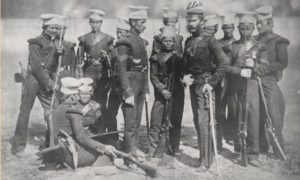 Undoubtable loyalty, ferocity in fight and attitude in courage are some best words that can describe Nepali Gurkhas. Over the centuries, they have literally marched from local to global level breaking the barriers. Diligent services by Gurkhas to various nations holds a sound historical background that dates back to 1814, the year that speaks of their heroic act!
Undoubtable loyalty, ferocity in fight and attitude in courage are some best words that can describe Nepali Gurkhas. Over the centuries, they have literally marched from local to global level breaking the barriers. Diligent services by Gurkhas to various nations holds a sound historical background that dates back to 1814, the year that speaks of their heroic act!
That was the year when the British declared a war against the Gurkhas of Nepal leading to the Anglo-Nepalese war. The British East India company was expanding its wings beyond India and its neighbors then. That’s where the aggressive expansion of Gurkhas within Nepal worried the British.
By then, Gurkhas were already on success path laid by their annexing act across territories in the early 18th and 19th centuries and were on their way to finally form the Kingdom of Nepal.
Finally, with the help of thousands of Indian soldiers, British devised a strategy to divide Gurkhas and then attack them. In a devastating battle that witnessed ground-breaking revolt, the Gurkhas of Nepal rose to fame in 1814 for their straightforward answer to the British that eventually resulted the British losing out to the Gurkhas.
Following this, the British proposed an offer requesting Gurkhas to fight for them, which the Gurkhas had to accept under the uncompromised peace treaty in 1816. After that, it’s known history that Gurkhas fought for the British in the two world wars, and eventually became key aspect of British Army.
Following Indian independence in 1947, the original ten Gurkha regiments were divided among the British Army and the new Indian Army. However, many of those Gurkhas who served both earlier finally chose their native Indian Army.
Today, Gurkhas serve across various nations such as their home country Nepal, Singapore, Brunei, US, Iraq and Afghanistan, among others. And, it would be really surprising to know that Gurkhas have been serving the British Crown since almost 200 years!
The Brigade of Gurkhas
The history of the Brigade of Gurkhas and their services to the world has a long history dating back to 1815, the year it began working with British.
Since then, the Brigade has been at its best in addressing global-level conflicts and peacekeeping operations, among other global-level security operations.
Though their focus was Far East prior to 1997, their base got shifted to the UK following Hong Kong’s annexation.
Some of the key units operating as the Brigade include:
- Royal Gurkha Rifles: Formed on July 1, 1994 as a combination of four Gurkha regiments- 2 GR, 6 GR, 7 GR and 10 GR, the Royal Gurkha Rifles is a team of two battalions and are famous for their operations across various locations such as Australia, Kenya, Afghanistan, Iraq, Ivory Coast, Sierra Leone, Kosovo, Bosnia and East Timor. The team currently has a jungle role Battalion with a permanent base in Brunei and a Light Role Battalion in the UK.
- The Queen’s Gurkha Engineers: Firstly, called as Sappers in October 1948, these Gurkhas provide engineering solutions to various force elements and indirect support to combat and military-civil transition & recovery operations.
- Queen’s Gurkha Signals (QGS): Formed during the Malayan Emergency to support the 17th Gurkha Division, this team is a regular unit of Royal Corps of Signals that assists the British Army as one of its support combat arms.
- Queen’s Own Gurkha Logistic Regiment: Formed in Singapore in 1958 as the Gurkha Army Service Corps, this team is one of the four Gurkha regiments serving the British Army and takes care of formation-level logistics within a theatre of operations.
- Gurkha Staff and Personnel Support: Formed on June 30, 2011 as Gurkha clerks, this team of Gurkhas provide HR, Personnel and Business Administration, Finance & Accounting and ICT support to the Brigade of Gurkhas at peacetime and during operations.
- Band of The Brigade of Gurkhas: Raised in November 1859 as part of the Indian Army, this team of Gurkhas is a music band team with musicians recruited after a basic military training. The team has travelled across the world over the decades.
- Gurkha Recruitment: Gurkha soldiers are usually recruited from Nepal and getting into a Gurkha unit means competing with thousands on selection board.
Hill-men from Nepal and those hailing from the families of Gurung, Thapa, Pun or Magar in western Nepal and Rai or Limbus in the eastern part of the country hold high regard as suitable for Gurkha units. Even today, majority of the Gurkhas hail from the aforementioned family groups.
Gurkha selection process of is one of the toughest assignments in the world. If a participant wishes to get through Gurkha selection process, he will be expected to run uphill for 40 minutes with a wicker basket full of rocks weighing 70 lbs on back.
Gurkha ranks are majorly dominated by the aforementioned ethnic families or groups belonging to hilly regions of Nepal.
Nearly 28,000 youths take up the Gurkha selection procedure for just over 200 places, every year.
As of 2017, Gurkhas have their presence across various army departments such as Indian Army (nearly 42,000), British Army (around 3,600), Singapore Gurkha Contingent (around 2,000) and Brunei Gurkha Reserve Unit (nearly 500), among others.
What the World Says About Gurkhas?
Here are some of the world’s famous statements on Gurkhas:
If I had Gurkhas, no armies in the world will defeat me– Adolf Hitler
Bravest of the brave, most generous of the generous, never had a country more faithful friends than you – Sir Ralph Turner MC, 3rd Queen Alexandra’s Own Gurkha Rifles, 1931.
They are tough, they are brave, they are durable, they are amenable to discipline – Tony Gould, Historian
They [the Gurkhas] are among the best Singapore can offer…They remain very much a substantial and frontline force, and the demands of this kind of event are precisely the sort of special operation that the Gurkhas are trained to handle. – Tim Huxley, Expert, Singapore Armed Forces
Over the centuries, there are many other global personalities who always admired the Tough Gurkhas of Nepal!
Here are some interesting facts about Gurkhas that might surprise you:
- Gurkhas is the first army team chosen as police guards
- Gurkha is an unbeatable warrior at an average height of just 5.3 inches
- Lachhiman Gurung, the Gurkha team that drew fame from WW-2 for fierce war against more than 200 Japanese soldiers, with Gurung alone killing 31 soldiers
- Around 19000 Gurkha soldiers lost their lives fighting for British in various wars
- Gurkhas are an integral part of the British Army even today
- Gurkhas are warriors known for their loyalty, bravery and kind-heartedness
- Gurkhas play a key role in peacekeeping operations, globally
- Following their age-old tradition, every Gurkha carries an 18-inch-long curved knife called kukri during battles
- World Wars alone saw deaths of 43,000 Gurkhas; their population declined from 112,000 at the WW-II peak to around 3,500 as of 2010.
- World War-1 alone saw 20,000 Gurkha casualties with the group winning almost 2,000 awards for gallantry in the war
- Gurkha Welfare Trust has been working for the welfare of retired and their families since centuries
- A Gurkha soldier in WW2 defended his army troop against 200-member enemy troop for 4 hours, even after losing one of his hands in a grenade explode
Gurkhas in News
Gurkhas have been in news many times for their unique act. Let’s look at some global news Gurkhas were featured in, over the period:
- Gurkhas Annual Golf Championship 2018: This is an annual sports event that features Golf sport within the Brigade of Gurkhas. The 2018 edition of the event was organized on June 28 at Weybrook Park Golf Course in Basingstoke. The championship was held to finalize the unit champion of the year and also to measure the status of Golf sport in the Gurkha Unit.
- Fight for UK Settlement: Retired Gurkhas have been in news over the years with regard to their settlement hardships. Financial hurdles, pensions post-retirement and right to settle in the UK have been some key concerns for many Gurkhas post-retirement. This has many times triggered debates between the UK Government and pro-Gurkha campaigners. Very recently in 2018, the issue rose to fame again with the British Actress Joanna Lumley coming onto the roads in support of their settlement.
- Safeguarding Key Events: Gurkhas have been featured in news very recently for their brave act in safeguarding the world’s most-awaited Trump-Kin meet. They also secured a renowned Singapore conference attended by various nations.
- Women to Join Brigade: In a first such decision in history, the UK Ministry of Defense has decided to recruit women for its infantry regiment into the Brigade of Gurkhas.
List not exhaustive! There are many success stories that speak of the bravery and loyalty of Gurkhas.
A famous saying about Gurkhas reads, “If a man says he is not afraid of dying, he is either lying or is a Gurkha.”
Long Live the Bravest of the Bravest!!!
The post Gurkhas of Nepal – Fierceness At its Best! appeared first on Nepali Sansar.
]]>